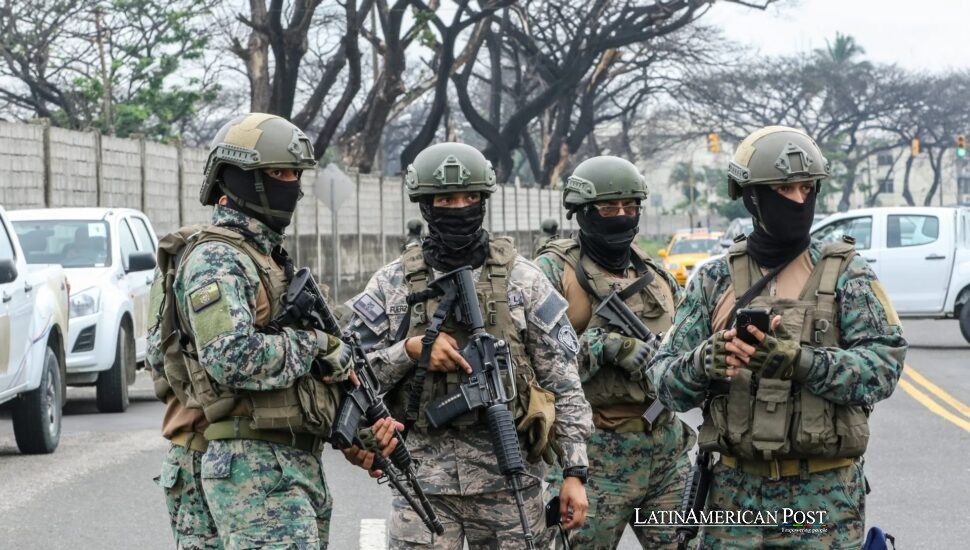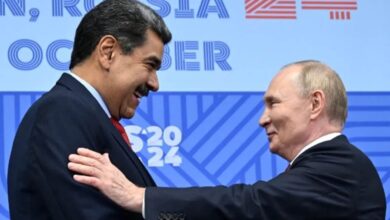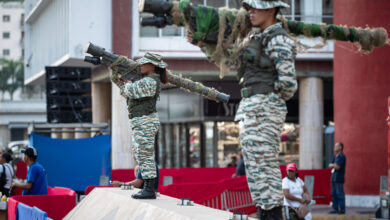Fito’s Fall: Ecuador’s Drug War Hits a Turning Point

At dawn in the coastal city of Manta, soldiers stormed a marble-clad mansion—and ended the six-month flight of Adolfo “Fito” Macías, Ecuador’s most feared narco boss. His capture exposed the deep rot between collapsing prisons, local politics, and global cocaine pipelines.
A Vanishing Act That Shook a Nation
When guards opened Cellblock 6 in Guayaquil’s Regional Prison on January 7, 2024, they found only smoke where Adolfo “Fito” Macías should have been.
What followed was a national humiliation.
Macías wasn’t just any prisoner—he was the head of Los Choneros, a homegrown criminal syndicate with deep ties to Mexico’s Sinaloa and Jalisco New Generation cartels. Forensic reports link his group to contract killings, cocaine exports, and inciting dozens of prison riots. According to Universidad Andina criminologists, Los Choneros functions as a franchise broker in Ecuador’s booming drug trade.
The escape triggered a manhunt that made international headlines. President Daniel Noboa, just 44 years old and barely weeks into office, suddenly found himself facing a spiraling security crisis. Car bombs rocked cities. Jail uprisings spread like wildfire. Washington posted a $5 million reward for Macías. Quito offered one million. But in the coastal barrios, Fito became a kind of ghost folk hero—elusive, dangerous, and still calling the shots.
The break in the case came from an unlikely source. As reported by Interior Minister John Reimberg, investigators noticed that a low-level transit official in Manta had no recent paystubs but had somehow acquired a fleet of properties.
One wiretap led to another. Security analyst Carla Álvarez, reviewing the transcripts, pointed to a hillside estate that smelled suspiciously of fresh plaster.
A Fortress with Saints—and a Secret Below
Just before 3:00 a.m., 300 soldiers sealed off the Los Arenales district in Manta. Combat engineers bulldozed through wrought-iron gates. Inside the mansion, they found a surreal tableau: plastic-wrapped furniture, unopened electronics, and thirty statues of Saint Jude, the Mexican narco-saint revered by traffickers from Sinaloa to Culiacán.
No sign of Macías—until a thermal drone, hovering overhead, picked up a strange heat signature behind the laundry room.
According to Police Commander Víctor Ordóñez, the mansion had been built over a hidden concrete capsule, complete with air-conditioning, weeks of provisions, and a hatch that could only be opened from inside.
As soldiers drilled through the bunker’s roof, Macías finally gave up. Video released later that morning showed him shirtless, blinking under floodlights as commandos zip-tied his wrists.
That image—of the kingpin hauled out of his sanctuary—was meant to signal victory. But few in Ecuador felt ready to celebrate.
How Ecuador’s Coast Became Cartel Country
To understand how Macías rose to power, you have to go back to 1999, when Ecuador’s economy collapsed and the country switched to the U.S. dollar. In the fishing towns along the Pacific, credit vanished, and cocaine cash stepped in to fill the void.
By 2010, Los Choneros had taken control of key port logistics, exploiting what the U.N. Office on Drugs and Crime flagged as some of the weakest customs enforcement in the Americas. Today, Guayaquil—the world’s busiest banana port—also ships a quarter of all cocaine intercepted in Europe.
Inside Ecuador’s overcrowded prison system—where some facilities operate at 420% capacity—Macías transformed his cellblock into a command center. He ran operations by phone, issued threats by text, and allegedly ordered hits from a prison bed.
His escape earlier this year, facilitated by guards who simply looked the other way, was more than a prison break. It was proof that inmates and authorities often co-manage these facilities, as the Inter-American Commission on Human Rights has long warned.
The Aftershock—and What Comes Next
President Noboa, who has declared a state of “internal armed conflict” against 22 major gangs, says Macías will face extradition to the U.S., where a 2024 indictment accuses him of trafficking 18 tons of cocaine to Houston and Rotterdam.
“We’ve done our part,” said Reimberg, anticipating the U.S. request “within hours.”
But exporting Fito may not solve Ecuador’s problem.
Grace Jaramillo, a political economist who studies drug economies, warns that the removal of a high-profile kingpin often creates a power vacuum. Inside La Roca, Ecuador’s highest-security prison, Macías still commands loyalty. On the streets of Manta and Guayaquil, lieutenants are already jockeying for his crown.
Just hours after the raid, gunfire erupted at Manta’s Tarqui market. In El Inca prison, inmates torched mattresses. Police dismissed the events as unrelated. But most analysts see them as warning shots—early signs of an internal war to control what Macías left behind.
Also Read: Ninety Years After the Crash, Medellín Still Dances with Gardel
The government is now banking on two things: a new security tax and an ambitious anti-organized crime bill, both crafted with help from Colombian military advisors. But these measures will take time—and they’ll need public trust that Ecuador’s institutions can hold firm.
Because the question hanging over Quito today isn’t whether Fito’s fall matters.
It’s whether it came too late to change what he helped build.





